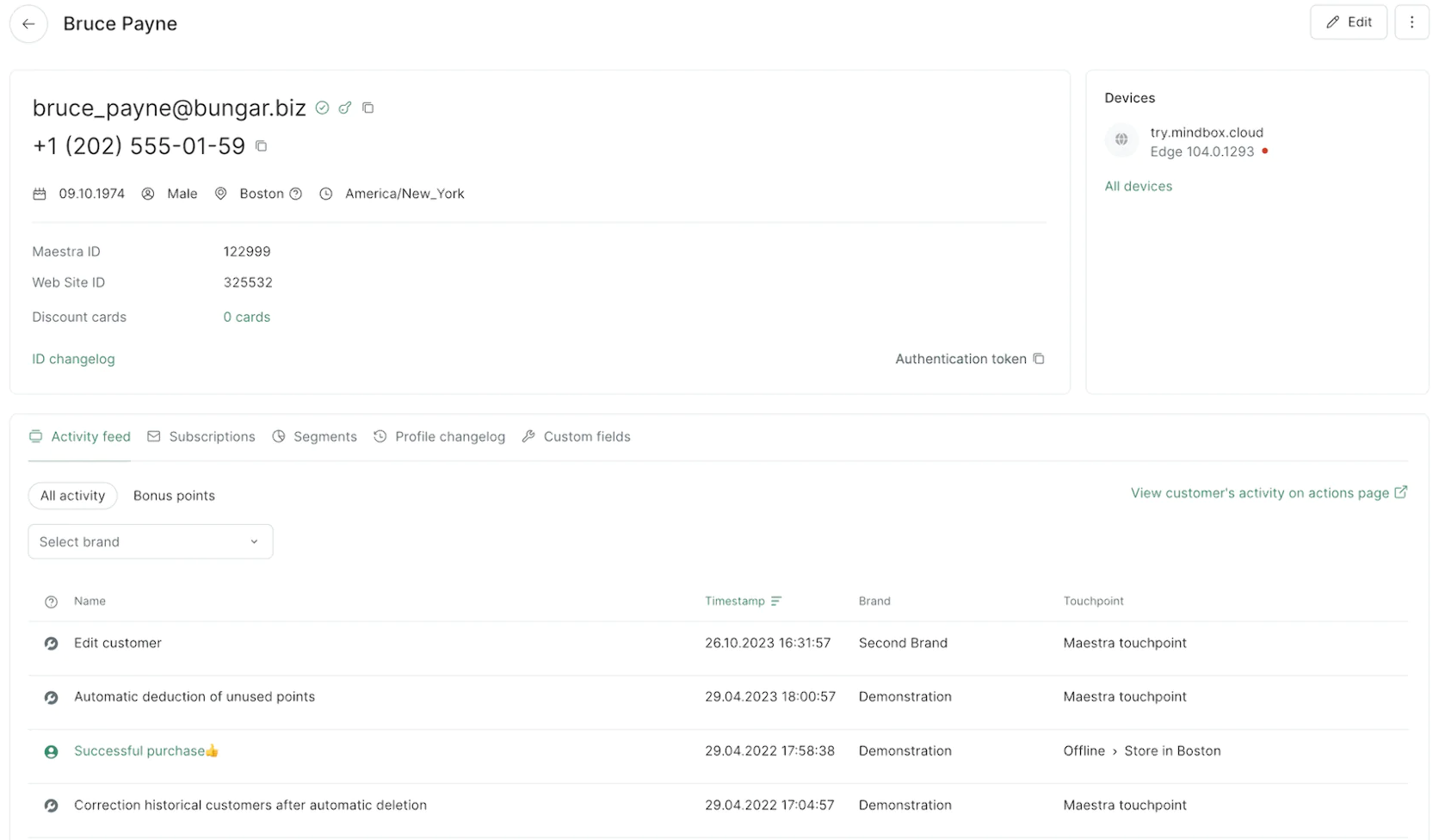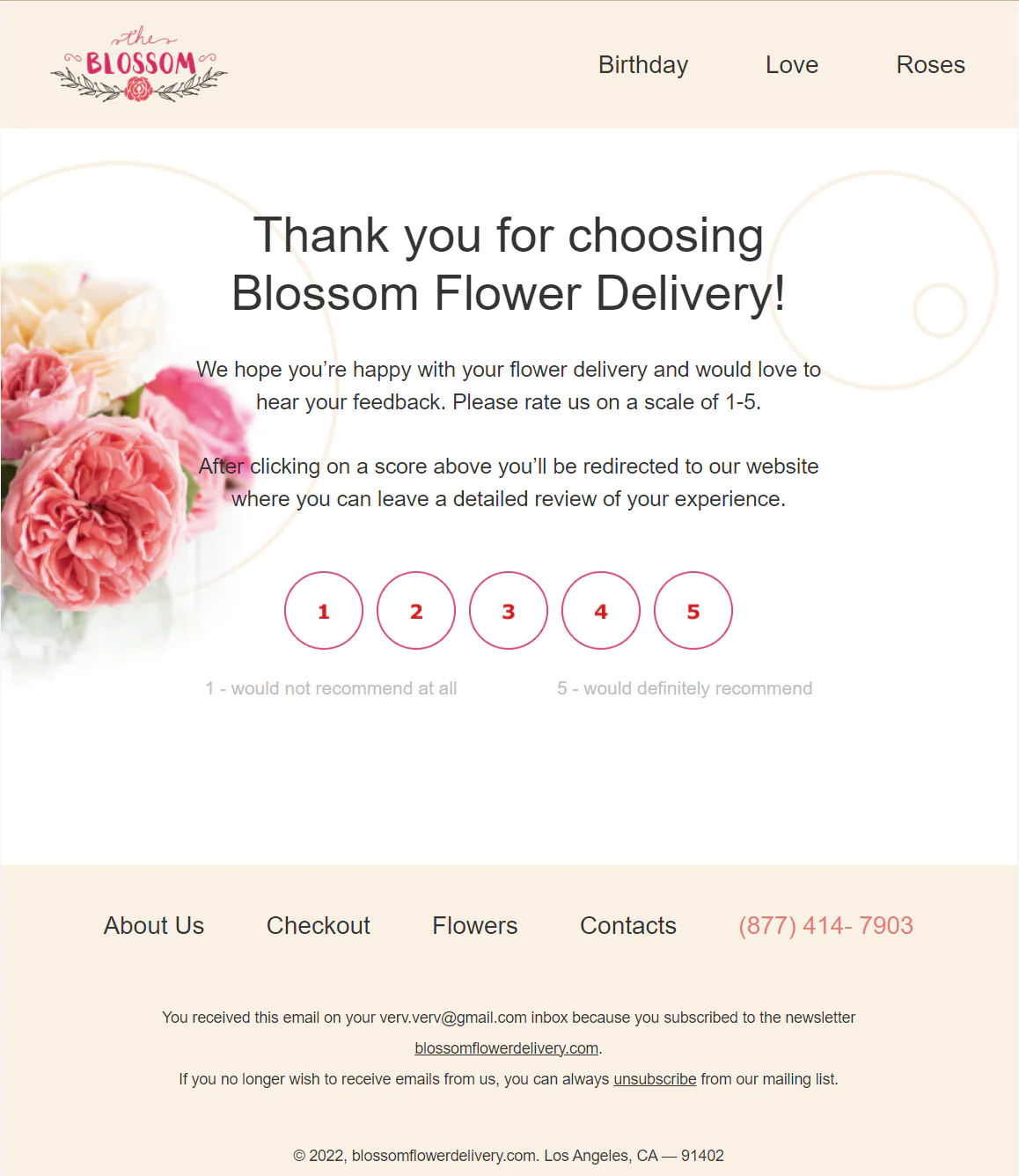Decode data distinctions: Your data (1st), partner insights (2nd), or external sources (3rd)? Uncover differences and learn practical examples for effective marketing strategies.
February 6, 2024
Decoding Data Strategies: 1st vs. 2nd vs. 3rd Party Insights
Question
What’s the practical difference between 1st vs. 2nd vs. 3rd‑party data? How to use them effectively?
Answer
Build your strategy around first‑party data that customers share directly through their interactions with you, enrich it selectively with second‑party data from trusted partners, use third‑party data mainly for broader context, and add zero‑party data (explicit preferences) to deepen personalization with maximum trust — then blend the mix intentionally based on your goals.
When it comes to data in marketing, think of it like a traveler’s essentials — just as a traveler relies on a compass for direction, a map for a big-picture view, and landmarks for specific points of reference, marketers use various data types to navigate the consumer landscape.
However, it’s not just about having these tools; it’s about knowing when and how to use them effectively. In this article, we’ll explore the importance of understanding the distinct roles of different data types — the detailed guidance of first-party data, the broader perspective of second-party data, and the comprehensive overview provided by third-party data — with examples for deeper customer insights and more powerful strategies.
Content:
What is First Party Data?
First party data is the information that your organization directly collects from its customers and audience. This data includes a wealth of insights such as customer demographics, purchase history, website interactions, email engagement, and more. Essentially, it encompasses all the data that your audience willingly shares with you through their interactions with your brand.
The uniqueness and significance of first party data stem from its origin — it originates directly from your customers, offering a glimpse into their behaviors, preferences, and needs, granting you an unparalleled opportunity to craft highly targeted and effective marketing campaigns.
How is First Party Data Collected?
Collecting first party data involves a systematic approach that taps into various touchpoints throughout a customer’s journey with your brand. Here’s a closer look at some common methods of collecting first party data:
1. Website Behavior: Your website can be a rich source of first-party data. This includes information obtained from sign-ups, subscriptions, and purchases, where users willingly provide personal details and preferences. Tools and platforms that facilitate these interactions can capture and store data in a way that respects user privacy while providing actionable insights.
2. Marketing Platforms: Marketing hubs like Maestra serve as a centralized repository for customer information. They store data on customer interactions, purchase history, support inquiries, and more. This data allows you to build highly detailed customer profiles and provides a 360-degree view of your relationships with individual customers.

An example of a customer profile within Maestra, providing a complete overview of customer contact details, campaign interactions and activity
3. Email Marketing: Email marketing data such as campaign open rates, click-through rates, and conversion rates reveal how engaged your subscribers are with your emails and help you tailor future communications to their interests.
4. Social Media Engagement: Social media platforms offer valuable insights into customer interactions. By tracking likes, shares, comments, and direct messages, you can gauge audience sentiment and engagement with your brand.
5. Surveys and Feedback Forms: Collecting direct feedback from customers through surveys and feedback forms generates valuable first party data. This data can uncover customer satisfaction levels, pain points, and can contain detailed suggestions for improvement.

NPS surveys, like this one from Blossom Flower Delivery, are a good basic example of first party data. This particular survey redirects the customer to the company’s website where they can leave more detailed feedback (i.e., more first party data)
6. Mobile Apps: If your business has a mobile app, this can also be a rich source of first party data. App usage data, location data, and in-app behaviors can all contribute to a deeper understanding of customer engagement.
7. Loyalty Programs: Customer participation in loyalty programs generates data on customer spending habits, preferences, and loyalty points accrual. This data can be used to incentivize repeat business and reward loyal customers.
First Party Data Applications
First party data has a broad range of applications — however, the most impactful of these applications can be summarized into the following key points:
Personalized Marketing
First party data enables you to tailor your marketing efforts to specific customer needs and preferences, increasing the relevance and effectiveness of your email, SMS, mobile and web push campaigns, as well as targeted ads.
For instance, consider a customer who has engaged with your social media post about eco-friendly products. Using this interaction as a cue, you can follow up with an email campaign tailored to eco-friendly practices and products, demonstrating that you understand and value their interests.
Product Development
Insights from first-party data can guide product development, ensuring that new offerings are finely tuned to meet the actual desires and expectations of customers, aligning closely with their evolving needs.
A practical application involves monitoring customer feedback on social media or support channels. If a notable number of users express dissatisfaction with a specific feature of your product, this feedback serves as direct evidence to prioritize adjustments and enhancements in your development pipeline.
Customer Retention Strategies
By understanding the needs and behaviors of existing customers, businesses can develop strategies to improve customer experience, satisfaction, and loyalty, leading to stronger customer relationships and sustained business growth.
An example of this is analyzing purchase history data to identify customers who may be at risk of churning, perhaps those who have not made a purchase in a longer-than-average timeframe. You can then engage these customers with personalized offers or content that reignites their interest, improving customer satisfaction and loyalty.
What is Second Party Data?
Second party data is essentially another organization’s first-party data that is shared with you. This means when a potential business partner collects data directly from their interactions with customers and then decides to share this data with you, it transforms into your second-party data. This shared data is invaluable for audience targeting or enriching your own database with insights that you might not have had access to otherwise. It offers a unique blend of being both highly specific and relevant, akin to first-party data, but with the added advantage of providing perspectives and insights beyond your immediate customer base.
Examples of second party data could include a detailed purchase history provided by an online retailer. This information offers a granular view of consumer buying patterns, preferences, and product affinity — insights that are gold for tailoring marketing strategies or product offerings. Another 2nd party data example is user engagement metrics from a collaborative app, where data on how users interact with the app’s features can offer clues on user behavior, feature popularity, and potential areas for product integration or co-marketing opportunities.
How is Second Party Data Collected?
One common method to obtain 2nd party data is by purchasing it from a company that has the specific data you need. This approach can save time compared to gathering the data yourself. However, it’s important to exercise caution — buying data can be costly, and there’s a risk of acquiring data that might not be useful for your business objectives. To minimize this risk, it’s advisable to request a sample or a summary of the data before making a purchase, ensuring that what you’re getting is truly valuable for your company’s needs.
In addition to purchasing, forming strategic partnerships with other businesses can be an effective way to access 2nd party data. Through these partnerships, you can exchange data that is mutually beneficial, providing insights that you might not be able to gather on your own. This method tends to be more reliable since the data comes from a trusted source and is more likely to be relevant to your audience.
Second Party Data Applications
While both first and second party data have the same applications, the true value of 2nd party data lies in its capacity to augment and enrich your existing first-party data. By integrating insights from external but related sources, it can shed light on aspects of customer behavior or preferences that may have been missed or not fully captured in your own data collection. This allows you create more personalized campaigns and identify new and more effective approaches when it comes to product development, customer satisfaction, and retention.
What is Third Party Data?
Third-party data is information that is collected by entities not connected to your organization. It stands apart from first and second-party data as it is not sourced from within a company or its direct partners. This data is typically aggregated from various external sources, like data brokers, research firms, and public records, encompassing a wide array of subjects like broad consumer behavior, extensive demographic data, and general market trends.
How is Third Party Data Collected?
In general, third-party data is collected through various methods, similar to first and second-party data, but on a broader scale. This includes tracking online behaviors across different websites and platforms, analyzing data from public records and databases, conducting comprehensive surveys and market research, as well as gathering insights from social media activities and online forums.
Data brokers play a significant role in aggregating and compiling this information from multiple sources and one of the most practical options when it comes to acquiring third party data is to approach one of these brokers (a notable example here is Acxiom). Another valuable source is market research firms, with entities such as Nielsen and Kantar specializing in detailed reports and analyses on specific sectors, consumer behaviors, and market trends, providing deeper insights that can be crucial for targeted marketing strategies.
Additionally, public data sources are an often underutilized but invaluable resource. Government databases, for instance, can provide macro-level data on demographics and economic trends, which can be especially useful for broader market analysis. While this data might be more general, it’s usually accessible either for free or at a minimal cost, making it a cost-effective option.
Third Party Data Applications
With third party data, the key goal is to see it as a way of enriching your first and second party data, using it to both benchmark and validate the insights you gained. By analyzing your customer base with first and second party data, you can then introduce third-party data to see how these insights align with broader market trends. This approach is particularly useful for either confirming the patterns and preferences you’ve observed or uncovering new perspectives. For example, a trend in customer behavior identified through your own data can be cross-referenced with third-party data to understand whether it’s an isolated occurrence or part of a larger, perhaps global, pattern.
Zero Party Data
When discussing data types, it’s important to also introduce an emerging concept: zero-party data. Though this is a relatively recent concept, it’s becoming an increasingly important asset for businesses seeking deeper customer engagement and personalization. Unlike first, second, and third-party data, zero party data is information that customers intentionally and proactively share with a brand. This can include preferences, purchase intentions, personal context, and how the individual wishes to be recognized by the brand. It’s data that customers willingly provide in exchange for a perceived value, such as a more personalized experience or rewards.
Zero party data can in some ways be seen as a subset of first party data — however, what sets this data type apart is its explicit and direct nature. While first-party data is collected through analyzing customer actions, zero party data is offered by the customers themselves, often through interactive experiences like quizzes, polls, preference centers, or direct feedback. This voluntary nature of zero party data makes it inherently trustworthy and highly valuable for businesses aiming to tailor their offerings to the exact needs and desires of their customers.
The rise of zero party data is partly driven by increasing privacy concerns and regulations, which have made the collection and use of customer data more challenging. Customers today are more conscious of their data privacy and are more likely to engage with brands that respect their preferences and offer transparency. By focusing on zero party data, businesses can build a foundation of trust and consent with their customers, leading to stronger relationships and enhanced loyalty.
Pros and Cons of First, Second, and Third Party Data Summarized
To recap everything we’ve covered so far, here is a quick reference table that summarizes the advantages and potential challenges of first, second, and third-party data.
Data Type
Pros
Cons
First Party Data
High Relevance: Directly collected from your customers, offering the most relevant and accurate insights into their behaviors and preferences.
Greater Control: You have complete control over how this data is collected and used.
Enhanced Privacy Compliance: Easier to manage in terms of privacy and data protection laws, as it involves a direct relationship with your customers.
Greater Control: You have complete control over how this data is collected and used.
Enhanced Privacy Compliance: Easier to manage in terms of privacy and data protection laws, as it involves a direct relationship with your customers.
Limited Scope: Restricted to your own customer interactions, potentially missing broader market trends.
Resource Intensive: Requires resources and infrastructure for effective data collection and analysis.
Resource Intensive: Requires resources and infrastructure for effective data collection and analysis.
Second Party Data
Targeted Relevance: Offers specific insights from a similar or complementary customer base.
Trustworthy Source: Typically comes from trusted business partners, ensuring a high level of quality.
Potential for Partnership Benefits: Can strengthen business relationships and open opportunities for co-marketing.
Trustworthy Source: Typically comes from trusted business partners, ensuring a high level of quality.
Potential for Partnership Benefits: Can strengthen business relationships and open opportunities for co-marketing.
Limited Availability: Dependent on the willingness and ability of partners to share data.
Potential for Misalignment: Risks of data not aligning perfectly with your specific needs or market.
Potential for Misalignment: Risks of data not aligning perfectly with your specific needs or market.
Third Party Data
Broad Market Overview: Provides a wide-ranging view of the market and consumer trends.
Useful for Benchmarking: Helpful for understanding your position in the market relative to broader trends.
Diversifies Insights: Can complement first and second-party data with new perspectives.
Useful for Benchmarking: Helpful for understanding your position in the market relative to broader trends.
Diversifies Insights: Can complement first and second-party data with new perspectives.
Less Specific: May lack the precision and relevance of data collected directly from your customers.
Quality Concerns: The accuracy and freshness of the data can vary, depending on the source.
Privacy and Compliance Issues: Navigating data privacy laws can be more complex due to the lack of a direct relationship with the data subjects.
Quality Concerns: The accuracy and freshness of the data can vary, depending on the source.
Privacy and Compliance Issues: Navigating data privacy laws can be more complex due to the lack of a direct relationship with the data subjects.
Final Thoughts
Understanding the nuances when it comes to first-party, second-party, and third-party data is crucial.
The distinction between 1st party vs 3rd party data is the most striking — first-party data is like having an in-depth conversation with your customers, offering highly specific and relevant insights. In contrast, third-party data is more like an overview of the market, providing broad trends and general consumer behaviors without a direct connection to your specific audience.
The difference between first party data and second party data is more subtle: the key distinction is that in the latter, your customer data is sourced through another business or entity’s direct interaction with your customers. In other words, this is another company’s first party data that is used to enrich the data you have already collected.
Finally, when it comes to 2nd party vs 3rd party data, these two are often mistakenly thought to be similar. However, second-party data combines the trustworthiness and direct relevance of first-party data with a new perspective, akin to getting an insider’s view from a similar market. Third-party data, on the other hand, is much more about breadth, offering a macro view of the market, but with less specificity and personalization.
For the most complete overview of your customers, strategically blending all three types is what can create a well-rounded, informed marketing approach.


